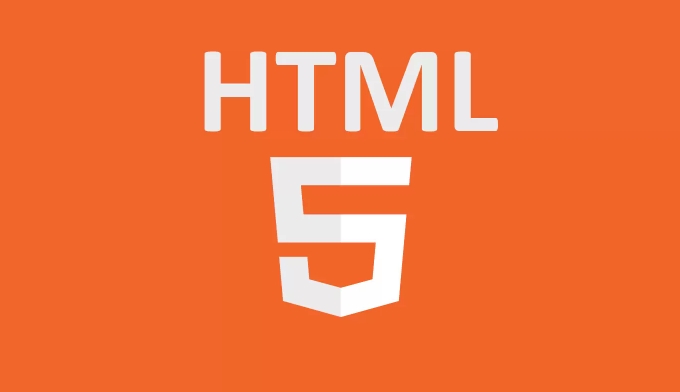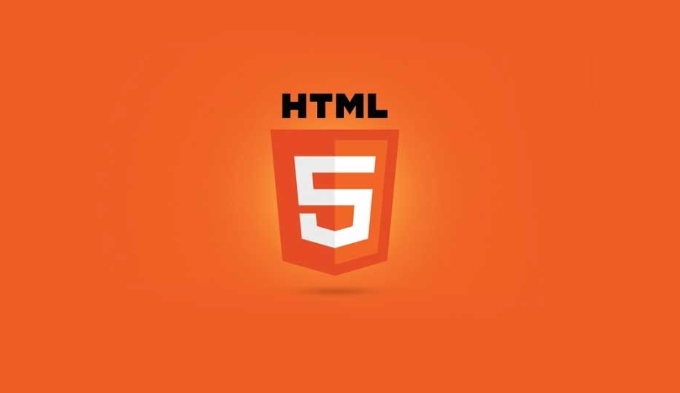Structuring Data with HTML5 Microdata (Schema.org Integration)
Jul 13, 2025 am 01:30 AMMicrodata is the tagging method used in HTML5 to add semantic information, and Schema.org is the standard vocabulary for structured data. 1. Microdata marks content types and attributes through item scope, itemtype and itemprop attributes; 2. Schema.org provides common data standards to define how to describe various entities; 3. Common application scenarios include the structure of content such as articles, products, events, local merchants, etc.; 4. Microdata can enhance search display effect, improve click-through rates, and help search engines understand page content; 5. It is recommended to use tools such as Google Structured Data Testing Tool to verify the correctness of the code.

Using HTML5's Microdata (with Schema.org) to structure data is actually adding some tags to the content of the web page to tell search engines what these contents mean. For example, an article, a product, or a restaurant, so that search engines can better understand the page and may display richer information in search results.

What are Microdata and Schema.org?
Microdata is a way provided by HTML5 to add additional semantic information to the content in a web page. You can understand it as "label on label".
Schema.org is a structured data vocabulary jointly launched by companies such as Google, Microsoft, and Yahoo. It provides a common set of standards to tell us how to describe people, organizations, events, products, etc.
Simply put:

- Microdata is a way of writing, a tool
- Schema.org is a set of standards that tell you what to write
How to use Microdata in HTML?
The basic structure is to add several attributes to the HTML tag: itemscope , itemtype and itemprop .
For example, you want to label a piece of information about a book:

<div itemscope itemtype="http://schema.org/Book"> <h2 itemprop="name">"Three-Body Problem"</h2> <p>Author: <span itemprop="author">Liu Cixin</span></p> <p>Published Date: <time itemprop="datePublished">2008-05-01</time></p> </div>
here:
-
itemscopemeans this is a structured data block -
itemtypeindicates which type of data this is (here is Book) -
itempropmarks the content corresponding to each specific attribute
After writing this way, the search engine can recognize that it is a book, its name, author and publication time.
What are the common application scenarios?
Common uses include but are not limited to the following:
- Article/Blog : indicate the title, author, release date, abstract, etc.
- Product page : Price, inventory, rating, brand and other information
- Activity page : time, place, organizer, etc.
- Local merchants : address, phone number, business hours, ratings, etc.
- Video or picture content : duration, uploader, preview picture, etc.
For example, a restaurant page can use the following structure:
<div itemscope itemtype="http://schema.org/Restaurant">
<h3 itemprop="name">Laozhang Noodle Restaurant</h3>
<p>Address: <span itemprop="address">No. 8, XX Road, Chaoyang District, Beijing</span></p>
<p>Rating: <span itemprop="aggregateRating" itemscope itemtype="http://schema.org/AggregateRating">
<span itemprop="ratingValue">4.7</span> points (<span itemprop="reviewCount">128</span> reviews)
</span></p>
</div> It is very common to use multiple item types in nesting. For example, in the above example, aggregateRating is a substructure.
What are the benefits of using Microdata?
- Enhanced search display effect : It helps generate Rich Snippets, such as star ratings, prices, time, etc., directly displayed in search results
- Improve click-through rate : visually attract users to click more
- Help search engines understand content : It is especially useful for new websites or websites with complex content
But be aware of:
- Don't pile up irrelevant data for the sake of rich summary
- Make sure that the content marked is consistent with the actual page content, otherwise you may be punished by search engines.
Tool recommendation and verification methods
Google provides an online verification tool called Structured Data Testing Tool , which can glue the HTML you wrote to see if there are any errors or where it can be optimized.
Other tools include:
- Structured data testing capabilities of Bing Webmaster Tools
- The HTML validator of W3C also supports some Microdata checks
It is recommended to run verification every time after writing structured data to ensure there are no spelling errors or nesting errors.
Basically that's it. Microdata is not complicated, but it can easily fail to work due to minor negligence. As long as you write according to the standards defined by Schema.org and then check with the verification tool, there will generally be no problem.
The above is the detailed content of Structuring Data with HTML5 Microdata (Schema.org Integration). For more information, please follow other related articles on the PHP Chinese website!

Hot AI Tools

Undress AI Tool
Undress images for free

Undresser.AI Undress
AI-powered app for creating realistic nude photos

AI Clothes Remover
Online AI tool for removing clothes from photos.

Clothoff.io
AI clothes remover

Video Face Swap
Swap faces in any video effortlessly with our completely free AI face swap tool!

Hot Article

Hot Tools

Notepad++7.3.1
Easy-to-use and free code editor

SublimeText3 Chinese version
Chinese version, very easy to use

Zend Studio 13.0.1
Powerful PHP integrated development environment

Dreamweaver CS6
Visual web development tools

SublimeText3 Mac version
God-level code editing software (SublimeText3)

Hot Topics
 Audio and Video: HTML5 VS Youtube Embedding
Jun 19, 2025 am 12:51 AM
Audio and Video: HTML5 VS Youtube Embedding
Jun 19, 2025 am 12:51 AM
HTML5isbetterforcontrolandcustomization,whileYouTubeisbetterforeaseandperformance.1)HTML5allowsfortailoreduserexperiencesbutrequiresmanagingcodecsandcompatibility.2)YouTubeofferssimpleembeddingwithoptimizedperformancebutlimitscontroloverappearanceand
 What is the purpose of the input type='range'?
Jun 23, 2025 am 12:17 AM
What is the purpose of the input type='range'?
Jun 23, 2025 am 12:17 AM
inputtype="range" is used to create a slider control, allowing the user to select a value from a predefined range. 1. It is mainly suitable for scenes where values ??need to be selected intuitively, such as adjusting volume, brightness or scoring systems; 2. The basic structure includes min, max and step attributes, which set the minimum value, maximum value and step size respectively; 3. This value can be obtained and used in real time through JavaScript to improve the interactive experience; 4. It is recommended to display the current value and pay attention to accessibility and browser compatibility issues when using it.
 Adding drag and drop functionality using the HTML5 Drag and Drop API.
Jul 05, 2025 am 02:43 AM
Adding drag and drop functionality using the HTML5 Drag and Drop API.
Jul 05, 2025 am 02:43 AM
The way to add drag and drop functionality to a web page is to use HTML5's DragandDrop API, which is natively supported without additional libraries. The specific steps are as follows: 1. Set the element draggable="true" to enable drag; 2. Listen to dragstart, dragover, drop and dragend events; 3. Set data in dragstart, block default behavior in dragover, and handle logic in drop. In addition, element movement can be achieved through appendChild and file upload can be achieved through e.dataTransfer.files. Note: preventDefault must be called
 How can you animate an SVG with CSS?
Jun 30, 2025 am 02:06 AM
How can you animate an SVG with CSS?
Jun 30, 2025 am 02:06 AM
AnimatingSVGwithCSSispossibleusingkeyframesforbasicanimationsandtransitionsforinteractiveeffects.1.Use@keyframestodefineanimationstagesforpropertieslikescale,opacity,andcolor.2.ApplytheanimationtoSVGelementssuchas,,orviaCSSclasses.3.Forhoverorstate-b
 HTML audio and video: Examples
Jun 19, 2025 am 12:54 AM
HTML audio and video: Examples
Jun 19, 2025 am 12:54 AM
Audio and video elements in HTML can improve the dynamics and user experience of web pages. 1. Embed audio files using elements and realize automatic and loop playback of background music through autoplay and loop properties. 2. Use elements to embed video files, set width and height and controls properties, and provide multiple formats to ensure browser compatibility.
 What is WebRTC and what are its main use cases?
Jun 24, 2025 am 12:47 AM
What is WebRTC and what are its main use cases?
Jun 24, 2025 am 12:47 AM
WebRTC is a free, open source technology that supports real-time communication between browsers and devices. It realizes audio and video capture, encoding and point-to-point transmission through built-in API, without plug-ins. Its working principle includes: 1. The browser captures audio and video input; 2. The data is encoded and transmitted directly to another browser through a security protocol; 3. The signaling server assists in the initial connection but does not participate in media transmission; 4. The connection is established to achieve low-latency direct communication. The main application scenarios are: 1. Video conferencing (such as GoogleMeet, Jitsi); 2. Customer service voice/video chat; 3. Online games and collaborative applications; 4. IoT and real-time monitoring. Its advantages are cross-platform compatibility, no download required, default encryption and low latency, suitable for point-to-point communication
 How to create animations on a canvas using requestAnimationFrame()?
Jun 22, 2025 am 12:52 AM
How to create animations on a canvas using requestAnimationFrame()?
Jun 22, 2025 am 12:52 AM
The key to using requestAnimationFrame() to achieve smooth animation on HTMLCanvas is to understand its operating mechanism and cooperate with Canvas' drawing process. 1. requestAnimationFrame() is an API designed for animation by the browser. It can be synchronized with the screen refresh rate, avoid lag or tear, and is more efficient than setTimeout or setInterval; 2. The animation infrastructure includes preparing canvas elements, obtaining context, and defining the main loop function animate(), where the canvas is cleared and the next frame is requested for continuous redrawing; 3. To achieve dynamic effects, state variables, such as the coordinates of small balls, are updated in each frame, thereby forming
 How to check if a browser can play a specific video format?
Jun 28, 2025 am 02:06 AM
How to check if a browser can play a specific video format?
Jun 28, 2025 am 02:06 AM
To confirm whether the browser can play a specific video format, you can follow the following steps: 1. Check the browser's official documents or CanIuse website to understand the supported formats, such as Chrome supports MP4, WebM, etc., Safari mainly supports MP4; 2. Use HTML5 tag local test to load the video file to see if it can play normally; 3. Upload files with online tools such as VideoJSTechInsights or BrowserStackLive for cross-platform detection. When testing, you need to pay attention to the impact of the encoded version, and you cannot rely solely on the file suffix name to judge compatibility.






